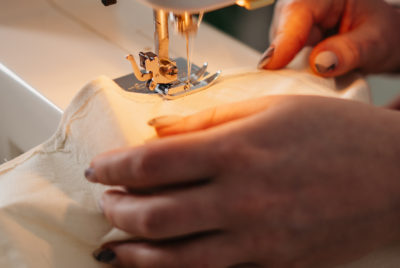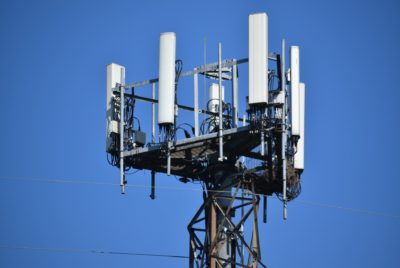Trouble finding a low EMF baby monitor? Here is an article that may help your family’s search.
Throughout the years, there have been a few clashing investigations on potential health ramifications of radiation introduction from gadgets like cell phones, fitness trackers, PCs, laptops, etc. The World Health Organization (WHO) has attempted a wide investigation of radiation effects to see where the worries ought to fall. However, there’s very little decisive information on baby monitors explicitly, and the advantages of these monitors regularly exceed those stresses.
Numerous monitors use advances that are like what is utilized in emergency clinics and NICUs, and a few likewise make careful arrangements to address radiation worries. If you are worried about radiation levels, search for monitors that address those particular fears.
However, because our children are smaller in size and have more slender skulls, they can be particularly defenseless against the impacts of EMF.
Still, monitors that track your baby’s imperative signs can help ease stress for some parents. The advantage of having the option to follow whether a child has quit breathing merits the venture. What’s more, fortunately, parents can diminish any potential security risks by utilizing the monitors or wearables astutely.
How Do Baby Monitors Work Anyway
Wireless baby monitors do give off RF (radio frequency) radiation, a type of EMF (electromagnetic field) radiation that all electronics give off. The monitors that are actually considered the safest emit radiation in the FM radio frequency range.
Most baby monitors, however, run in the higher microwave range. This is actually the same type and at the same high level as our WiFi and our cell phones. And these levels of EMF? Well, they are actually considered harmful to adults and even worse for children. So, our goal here should be not only to find a great baby monitor but also to find a great low EMF baby monitor.
There are chiefly three distinct types of baby monitors: Analog, digital, and WiFi-based.
Analog Monitor
Analog monitors are the most seasoned type of baby monitor. This kind of monitor is as straightforward as the radios they utilized for WWII. One side is the beneficiary, and the opposite side is the transmitter. The transmitter gets sounds with an amplifier and transmits it to the recipient by means of radio signals.
Digital Monitor
Digital monitors are like Analog monitors in that it has one recipient and one transmitter. The distinction here is the manner by which the sign is transmitted. Each bit of the framework transmits over various frequencies in a semi-irregular example, known uniquely to the monitor set. This transmitting technique, known as the Frequency-bouncing spread range (FHSS), is the monitor’s method for verifying the sign and decreasing impedance. It likewise makes video transmissions conceivable.
WiFi Based Monitor
WiFi-based monitor is the best updated structure. The contrast between the WiFi-based and the two past forms is that WiFi-based monitors don’t transmit legitimately to a beneficiary. Rather, these monitors transmit to a nearby WiFi switch. Along these lines, the monitor capacities like whatever else on the system, making it conceivable to see your baby from any place in the house, or world, with the right login.
Analog vs Digital
So let’s dig into the differences between analog vs digital models. Analog models are considered the safest, but they are becoming hard to find in the US these days. They use the FM radio frequency, usually at 40 MHz. Analog models are sound-only monitors.
On the other side of the coin there are digital monitors. Digital monitors operate via WiFi, Bluetooth, DECT (digital enhanced cordless telecommunications) or FHSS (frequency-hopping spread spectrum). These monitors work at the 2.4 GHz (or 2400 MHz) microwave frequency, a far more potentially dangerous level than analog models.
So what if you feel you need more features than the analog models offers? Well, the next best choice would be low-emissions digital monitors or models with an eco mode, or sound activation. These units do not consistently produce high emissions. These units actually power up only when sound is detected, which offers a moderate level of EMF protection.
What Are The Best Low EMF Baby Monitors Out There?
(Below Links Provided by Amazon.com)
Safest – Analog Monitors
Although, analog monitors are becoming harder and harder to come by these days, they are absolutely the safest choice for a low EMF baby monitor. At the time of this writing, we were only able to find one.
Safety 1st Crystal Clear Audio Monitor – This is a no-frills, audio-only monitor that operates at 49 MHz. The parent unit can be clipped onto a belt, and it is relatively inexpensive.
Next Best Low EMF Baby Monitor – Low-emission Digital Monitors
We were able to locate two low-emissions digital models that operate at 900 MHz. This is still higher than analog models but much lower than the typical digital models. Both are voice-activated. And both are great for our quest on finding a great low EMF baby monitor.
Sony NTM-910 900MHz BabyCall Nursery Monitor – This unit features alerts with both sound and lights.
Low EMF Digital Baby Monitors with Video and Sound Activation/Eco Mode
For the family that feels they can’t do without video, these models are not technically low-emissions (they operate at 2.4 GHz). However, they do offer sound activation or eco mode for EMF reduction.
Philips AVENT SCD630/37 Video Baby Monitor – This unit has a 3.5-inch video screen. It has both sound-activation mode and audio-only mode. The baby’s unit is wall-mountable. Other features include night vision and room temperature monitoring.
Baeishiji Baby Monitor – This unit is highly rated and has a 3.5-inch camera and features night vision.
Hard Wire Your Monitor for Best EMF Protection
Hard-wiring your baby monitor is the safest method of all—it bypasses WiFi altogether. It will mean running Ethernet cable to your baby’s room, but this method offers the highest level of EMF reduction. You will need a monitor that has an Ethernet port. Unfortunately, not many brands make these anymore. We did however find one that’s highly rated and feature-rich.
MOM&BB Baby Safe Camera Monitor – Some features include an ultra HD camera with 360-degree view and pan-and-tilt functions, video recording, cloud storage, night vision, and 2-way audio. This model even works with Amazon Alexa.
In Conclusion
No matter what kind of monitor you decide on, attempt to locate your monitor as far from the baby as possible, obviously without giving up any functionality. The nearer your baby is to EMF radiation, the more they will absorb.
In the long run, we all definitely want to do what’s best for our kids, and sometimes it’s not always easy to know exactly what that is. When it comes to EMF radiation, with a little research and a lot of common sense, it does become a bit easier to make a responsible choice.





